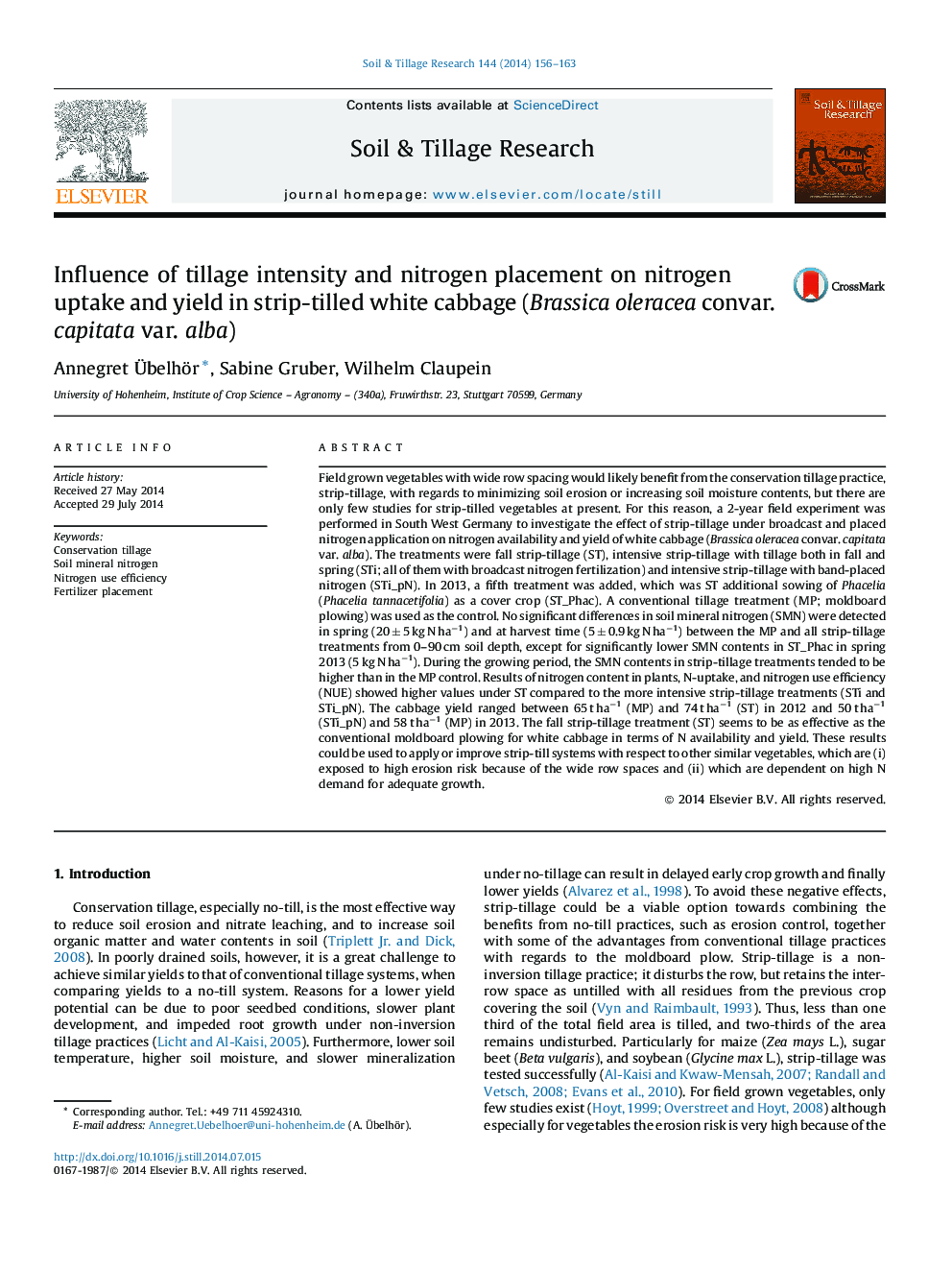| Article ID | Journal | Published Year | Pages | File Type |
|---|---|---|---|---|
| 305675 | Soil and Tillage Research | 2014 | 8 Pages |
•Yield potential under fall strip-tillage was similar to conventional tillage.•N-uptake under fall strip-till was higher than under more intensive strip-till treatments.•Cabbage plants were able to take up nitrogen from the untilled area under strip-till.•Cabbage yield was affected negatively by band-placed N-fertilization under strip-till.•The results could be used to apply strip-till systems for other field grown vegetables.
Field grown vegetables with wide row spacing would likely benefit from the conservation tillage practice, strip-tillage, with regards to minimizing soil erosion or increasing soil moisture contents, but there are only few studies for strip-tilled vegetables at present. For this reason, a 2-year field experiment was performed in South West Germany to investigate the effect of strip-tillage under broadcast and placed nitrogen application on nitrogen availability and yield of white cabbage (Brassica oleracea convar. capitata var. alba). The treatments were fall strip-tillage (ST), intensive strip-tillage with tillage both in fall and spring (STi; all of them with broadcast nitrogen fertilization) and intensive strip-tillage with band-placed nitrogen (STi_pN). In 2013, a fifth treatment was added, which was ST additional sowing of Phacelia (Phacelia tannacetifolia) as a cover crop (ST_Phac). A conventional tillage treatment (MP; moldboard plowing) was used as the control. No significant differences in soil mineral nitrogen (SMN) were detected in spring (20 ± 5 kg N ha−1) and at harvest time (5 ± 0.9 kg N ha−1) between the MP and all strip-tillage treatments from 0–90 cm soil depth, except for significantly lower SMN contents in ST_Phac in spring 2013 (5 kg N ha−1). During the growing period, the SMN contents in strip-tillage treatments tended to be higher than in the MP control. Results of nitrogen content in plants, N-uptake, and nitrogen use efficiency (NUE) showed higher values under ST compared to the more intensive strip-tillage treatments (STi and STi_pN). The cabbage yield ranged between 65 t ha−1 (MP) and 74 t ha−1 (ST) in 2012 and 50 t ha−1 (STi_pN) and 58 t ha−1 (MP) in 2013. The fall strip-tillage treatment (ST) seems to be as effective as the conventional moldboard plowing for white cabbage in terms of N availability and yield. These results could be used to apply or improve strip-till systems with respect to other similar vegetables, which are (i) exposed to high erosion risk because of the wide row spaces and (ii) which are dependent on high N demand for adequate growth.
